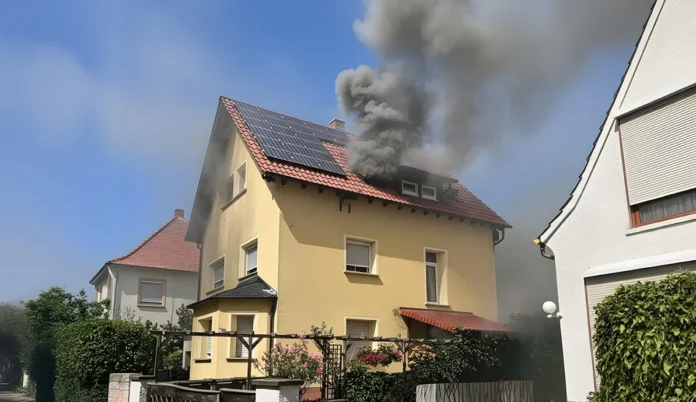Investigators Warn of Growing Safety Crisis Linked to Energy Storage Systems
WORMS, Germany — Firefighters in the German city of Worms battled a fierce blaze this week that authorities believe was caused by yet another lithium-ion battery system, the latest in a disturbing pattern of fires tied to the so-called “green energy revolution.”
The fire erupted in a commercial building early Monday morning, rapidly spreading through the structure and sending plumes of toxic smoke over the surrounding area. Dozens of firefighters were called to the scene as the blaze threatened nearby properties.
Investigators later confirmed that the fire originated from a battery energy storage unit located inside the building, a lithium-ion system designed to store electricity generated by renewable sources such as solar panels.
“Initial evidence points to a malfunction in the battery system,” said a spokesperson for the Worms Fire Department. “These types of fires are complicated to control because of the chemical reactions involved.”
This incident is the latest in a string of lithium battery fires reported across Germany in recent months. From residential balconies to commercial storage facilities, these devices, once promoted as safe and efficient, are increasingly being linked to catastrophic fires.
In April, a balcony battery system in another German city caught fire, forcing residents to flee their homes. Now, with the Worms blaze, authorities are warning that the spread of unregulated lithium energy systems is becoming a national safety threat.
“We are seeing more and more of these fires, and the common denominator is always lithium-ion technology,” said energy safety expert Dr. Henrik Bauer. “They are unstable, they overheat, and once they ignite, the fire is almost impossible to extinguish.”
Firefighters report that lithium battery fires can burn for hours, even days, due to thermal runaway, a chemical chain reaction inside the cells that continues to generate heat and gas even after the flames appear to be contained.
Residents near the Worms site described the smoke as “choking and chemical,” forcing many to close their windows and remain indoors. Environmental officials later warned that lithium fires release hazardous gases, including hydrogen fluoride, which can cause severe respiratory damage.
The repeated pattern of explosions and chemical hazards is fueling growing public unease about the safety of these energy systems.
“People are being told to install these systems for sustainability, but no one is warning them about the fire risks,” said consumer advocate Sabine Keller. “These products are being rushed to market with little oversight. It’s reckless.”
A Warning Ignored
Germany has championed the adoption of renewable energy for over a decade, but experts say safety standards have not kept pace with the rapid deployment of new technologies. Many battery systems are imported from low-cost manufacturers and installed in residential or commercial buildings without thorough inspection.
Authorities are now calling for stricter safety regulations, mandatory certification, and clearer consumer education about lithium-ion systems.
“The technology may be modern, but the danger is ancient, fire,” Dr. Bauer warned. “Until we address the safety gap, these so-called clean energy systems will continue to put people and property at risk.”
The Worms fire stands as yet another stark reminder that the world’s rush toward electrification comes with a hidden cost.
Once again, lithium-ion batteries have turned from a symbol of innovation into a source of destruction, and the alarm bells are only getting louder.
Read the Latest Battery News Shaping the Global Power Market
Lithium Battery Again Blamed for Fire in Germany- Source


